Depicting Baba Nanak: Images from the Janamsakhi traditionManmeet Kaur November 01, 2023 The legendary stories of Baba Guru Nanak's (1469-1539) life, known as Janam-sakhis (translating to ‘a life as witnessed normally’), which sprung up in the decades immediately after the birth of Guru Nanak Dev ji, offer ‘true visions’ of the divinity. The Janam, to which the devoted mind testifies as sakshya, is not a collection of facts about the person's life; rather, it is the product of the devotee's imagination, which goes far beyond the bounds of time and the person's actual experiences as a human being. What were some the ways in which the sacred figure was depicted in this tradition? |

|
Sakhi originates from the Sanskrit word 'Sakshi,' which means both ‘proof of the all-permeating mind’ and ‘mind merging with Him’ in a real witness to a phenomenon or the unfolding of a riddle that reveals the hidden truths of the cosmos and God. Sakhi, as we currently understand it, is a straightforward biography of Guru Nanak. The events depicted in Janam Sakhis, Puranas, or Jatakas are not the authentic records of the life events of a specific spiritual personality, but the real reflections and manifestations of divinity and spiritualism are represented and manifested in these texts. |
|
|
|
The Janam-sakhis comprises various mythological legends that give no chronological, geographical, or objective accuracy in describing Guru Nanak's life. The ancient Janam-sakhi manuscripts extend beyond Guru Nanak's biography. Each story is associated with a passage in the hymn of the Sikh scripture and serves to impart a vital lesson or message. Thus, they construct the background and exegetical basis for a number of Adi Granth songs. The many Janam-sakhi versions contain accounts of Guru Nanak's miraculous trips to Mecca, a sacred location for Muslims and Mount Meru, a legendary destination for Hindus, Buddhists, and Jains. At his birth, astrologers and fortune tellers also foretold his glory. |
|
|

Pahari School-Guler.
Sketch of Guru Nanak Dev ji talking with his son, Siri Chand and Laxmi Chand
c. 18th century, Drawing on paper
Courtesy: Government Museum and art Gallery, Chandigarh

Pahari School- Guler
Sketch of Guru Nanak and Bala
c. 18th century, Drawing on paper.
Courtesy: Government Museum and art Gallery, Chandigarh

Pahari School- Guler
Sketch of Guru Nanak Dev ji talking to Shiekh Behram
c. 18th century, Drawing on paper.
Government Museum and art Gallery, Chandigarh
Masterful and thoroughly spiritualized works of Sikh art, Janam-sakhi pictures began to appear in manuscripts and pothis, illuminating the historical, theological, and social processes and progressive changes in early Punjabi society through symbols, narratives and tales mirrored in these works. |

Pahari School- Guler
Sketch of Guru Nanak Dev ji’s visit to a mosque
c. 18th century, Drawing on paper.
Government Museum and art Gallery, Chandigarh

Pahari School- Guler
Sketch of Guru Nanak Dev ji talking to another man
c. 18th century, Tinted Drawing on paper
Government Museum and art Gallery, Chandigarh

Pahari School- Guler
Sketch of Guru Nanak Dev ji sitting near the well of Chander Bhan
c. 18th century, Drawing on paper.
Government Museum and art Gallery, Chandigarh
Punjabi artists actively embraced several dynamic styles, including elements from miniature paintings, drawings, and illustrated manuscripts, resulting in a synthesis of a number of different artistic schools and idioms. Sikh artists were able to effectively blend Sikh stories into them. Guru Har Rai, the seventh Sikh guru, is credited by a historian, Dr. Fauja Singh, as being the first to describe illustrated pothis and portraits based on the ethos and philosophy of the Sikh religion (1658 A.D.). Before that, during the time of 'Guru Arjan Dev'—the Fifth Sikh Guru—oral and written text for Janam-sakhis without drawings were produced by Sikh religious preachers. |
|
Folios of coloured Janam-sakhi with inscriptions in Nanakshahi language from the collection of Government Museum and art Gallery, Chandigarh |
|
|
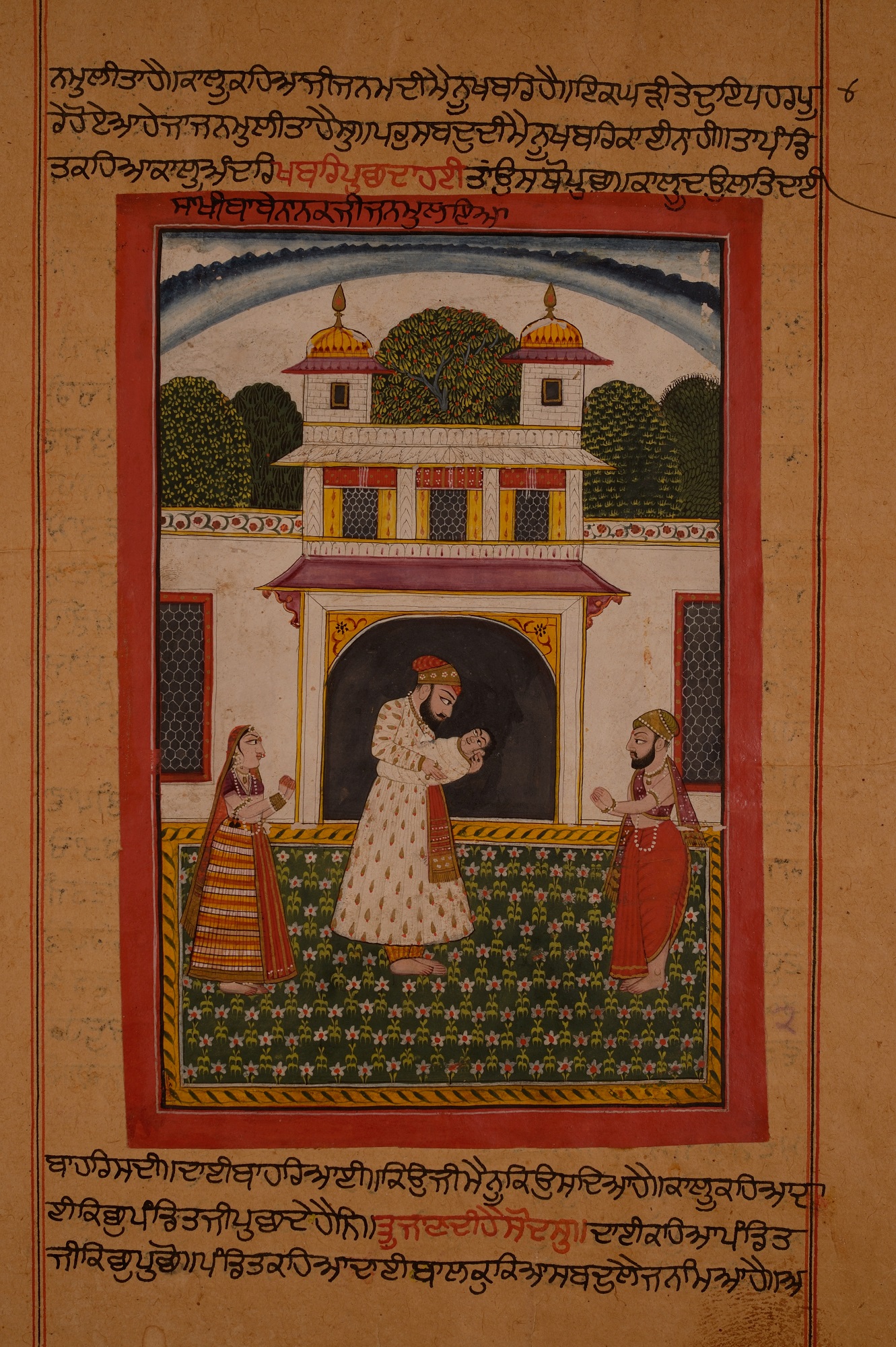
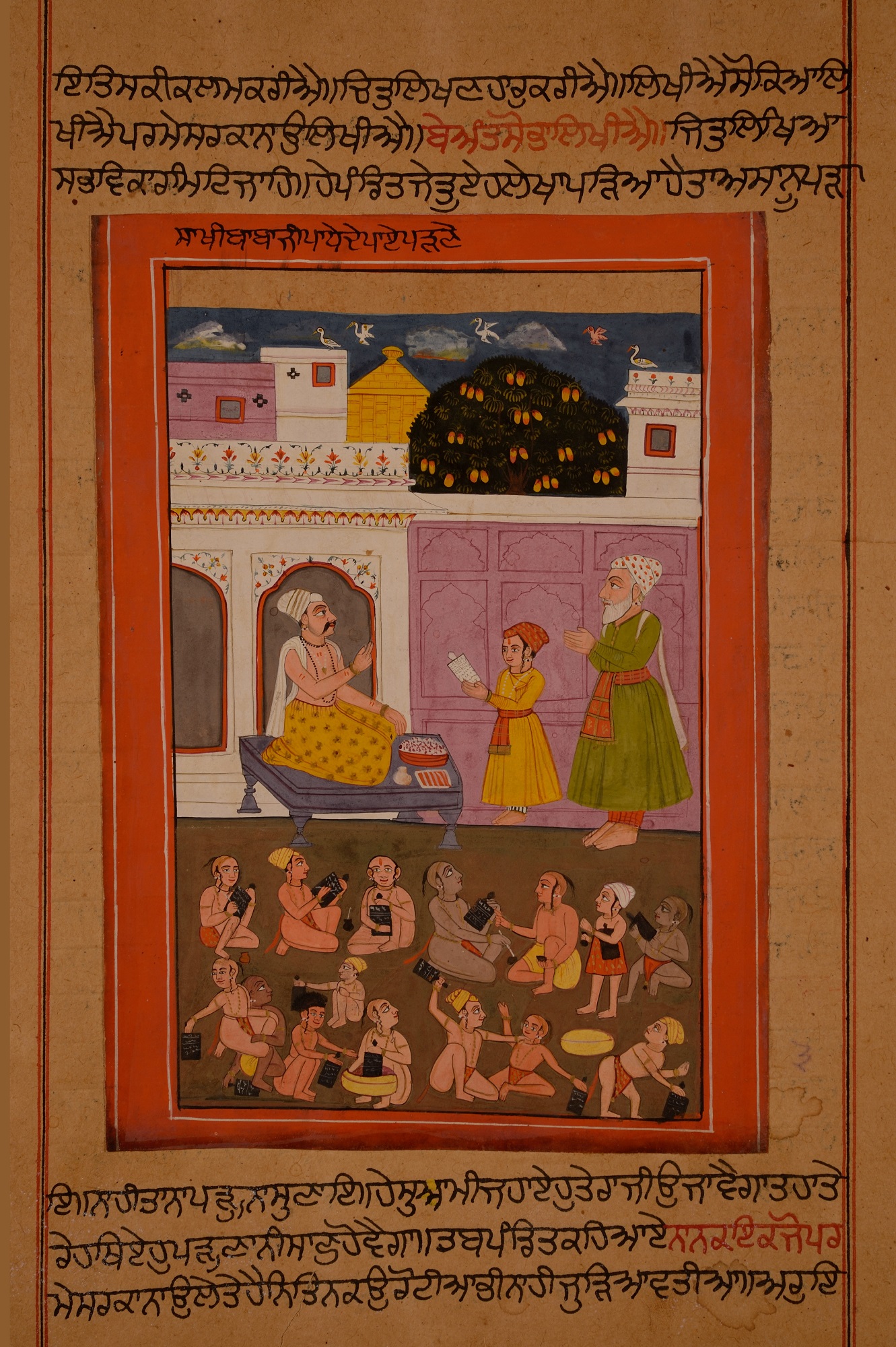
Birth sceneThe first Folio depicts the heavenly birthplace of Guru Nanak Dev ji. The figure on the right is Mehto, while the central figure is holding a newborn infant which is Guru Nanak Dev ji in the arms of his father. The woman on the side is Daluti dai, who was the caretaker or nanny. The captured moment pertains to a dialogue in which Mehto recounts the fortuitous birth of Nanak Dev ji at amrit time (dawn). The second Folio shows Guru Nanak Dev Ji posing inquiries to his mentor Pandit Gopal concerning the subject matter of educating him about God. |

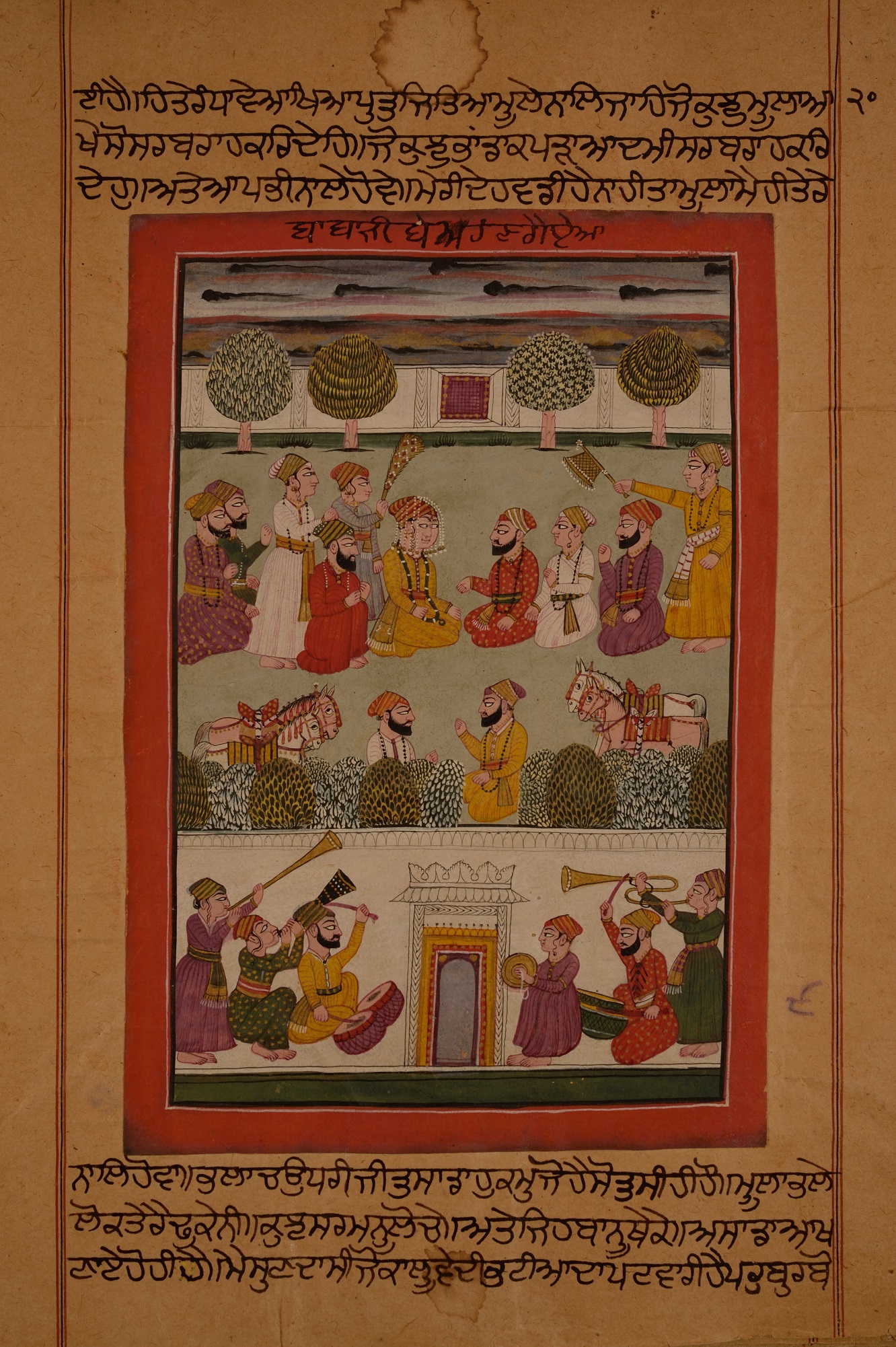
This scene represents a farmer complaining to Rai Bhullar about Guru Nanak Dev ji and his cattle, which is loose in his field. Bhullar pays an unexpected visit and observes Nanak Ji sleeping under the protection and shelter of a snake. In the second image, a dialogue occurs between Miya ji and Guru Nanak Dev ji regarding their sincerity and devotion to God. |
|
POTHIS The first Sikh pothis were similar to the Hindu manuscripts and scriptures, in that they featured narratives and representations of important events in Guru Nanak's life and the teachings of the Sikh faith through simple line drawings. These depictions were based on more elaborate paintings. The following images are from the early Pothi- Nanak Prakash from c. 18th century, comprising of a lithograph print. The collection is privately held under the Pothi Seva. |
|
|
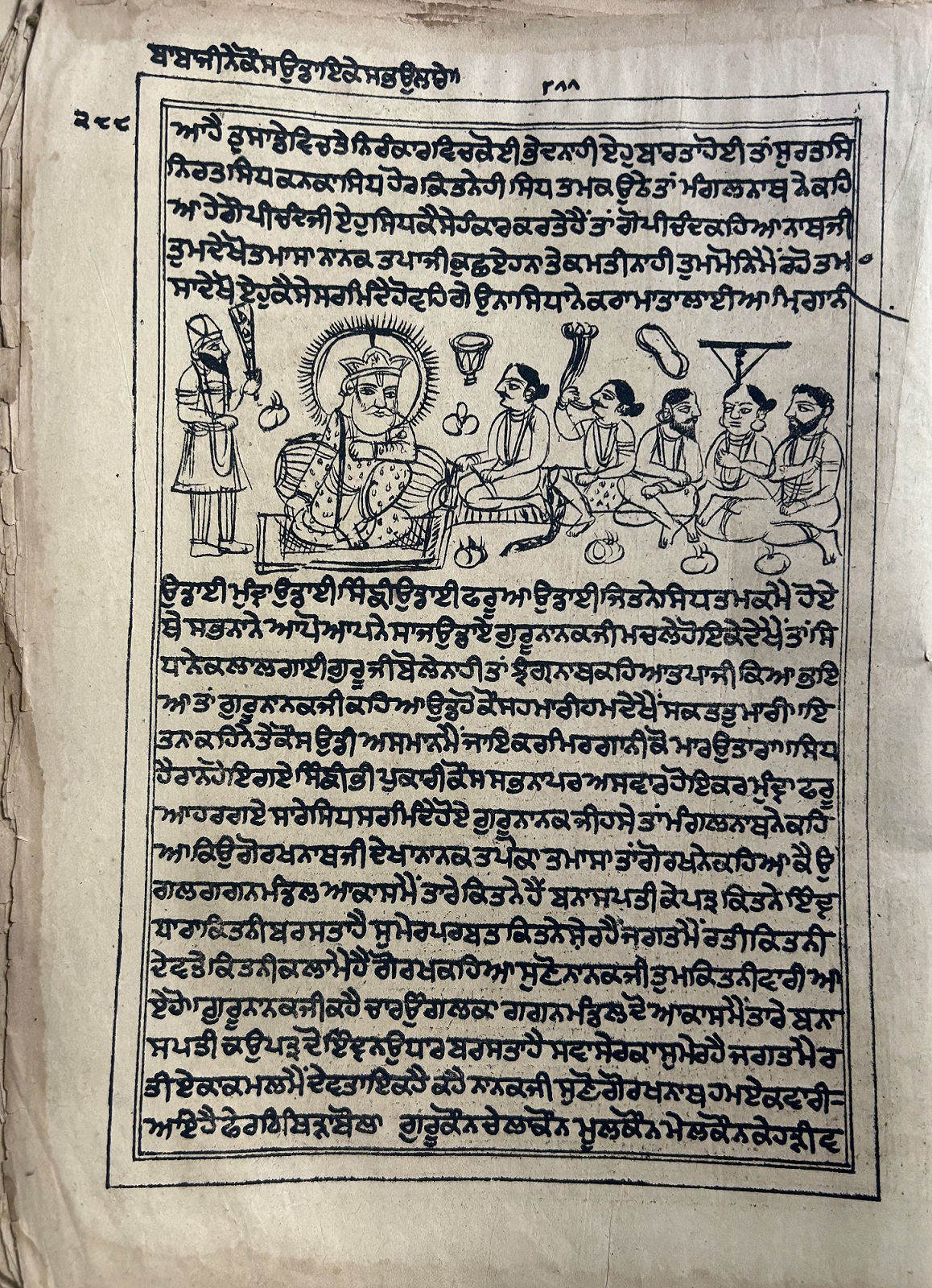
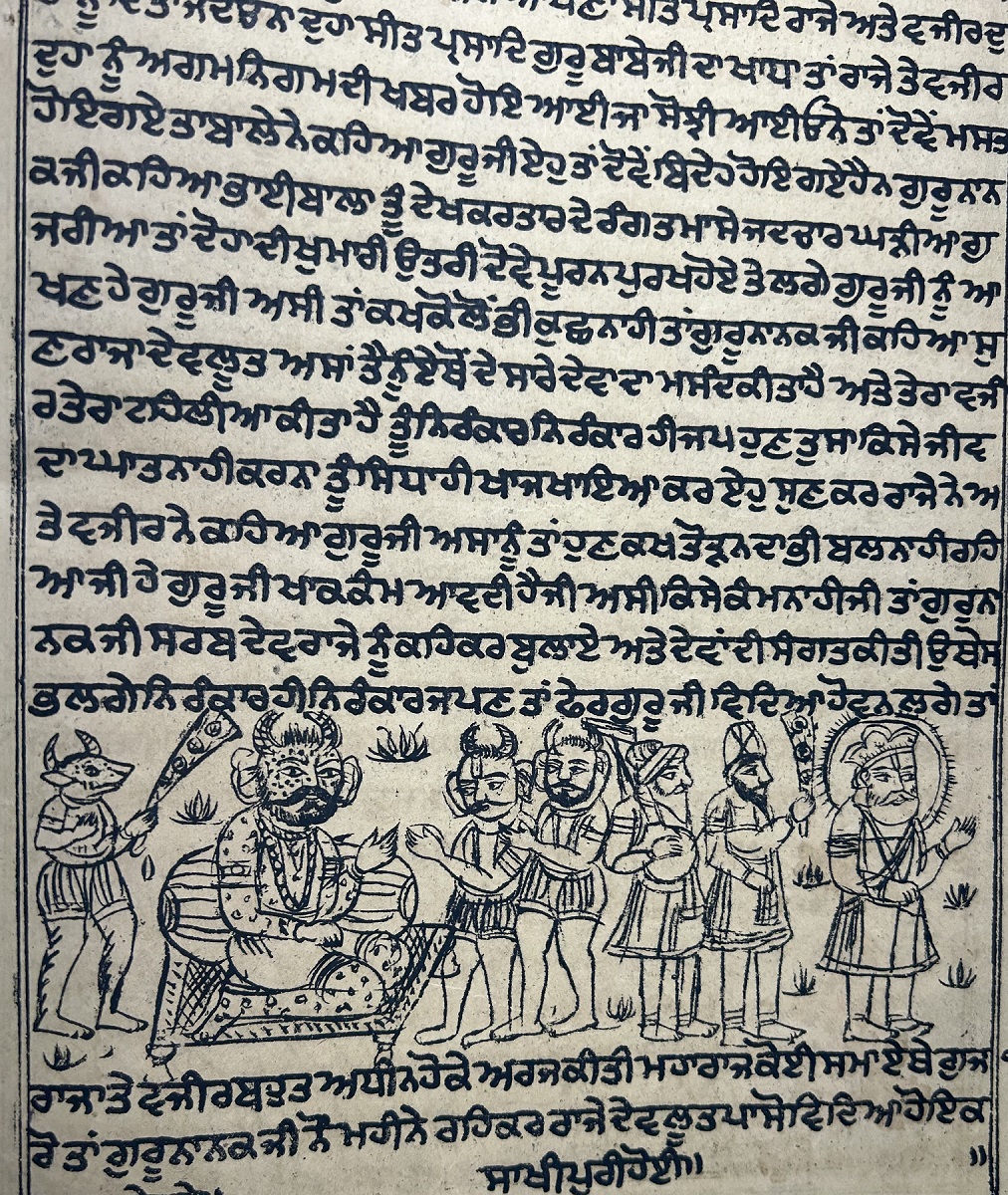
The first image depicts a scene with Guru Nanak Ji at Sumeru Mountain, where he met Gorakhnath and his disciple . The powers of others, in this illustration, don’t work in front of the powers of Nanak Dev ji. Nanak ji questions them and a conversation follows. They were enlightened by his divinity and started chanting his name, as Baba Nanak. In the second image, Guru Nanak Dev Ji is depicted after arriving in the state of Sarabdev, where they engage in conversation. Sarabdev and his wazir render Guru ji homage; in exchange, Guru ji bestows upon Sarabdev the parsad (blessed food). |
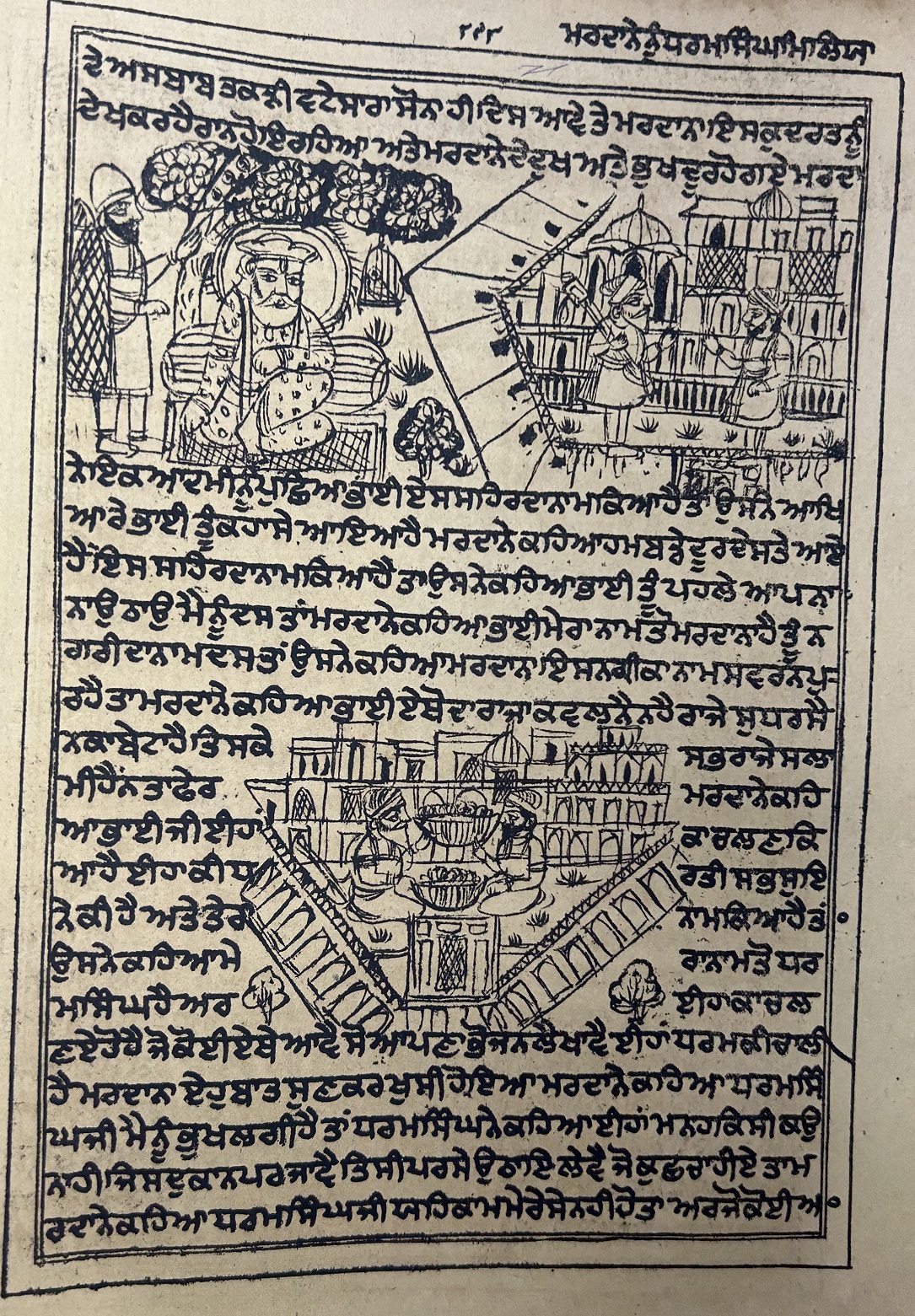
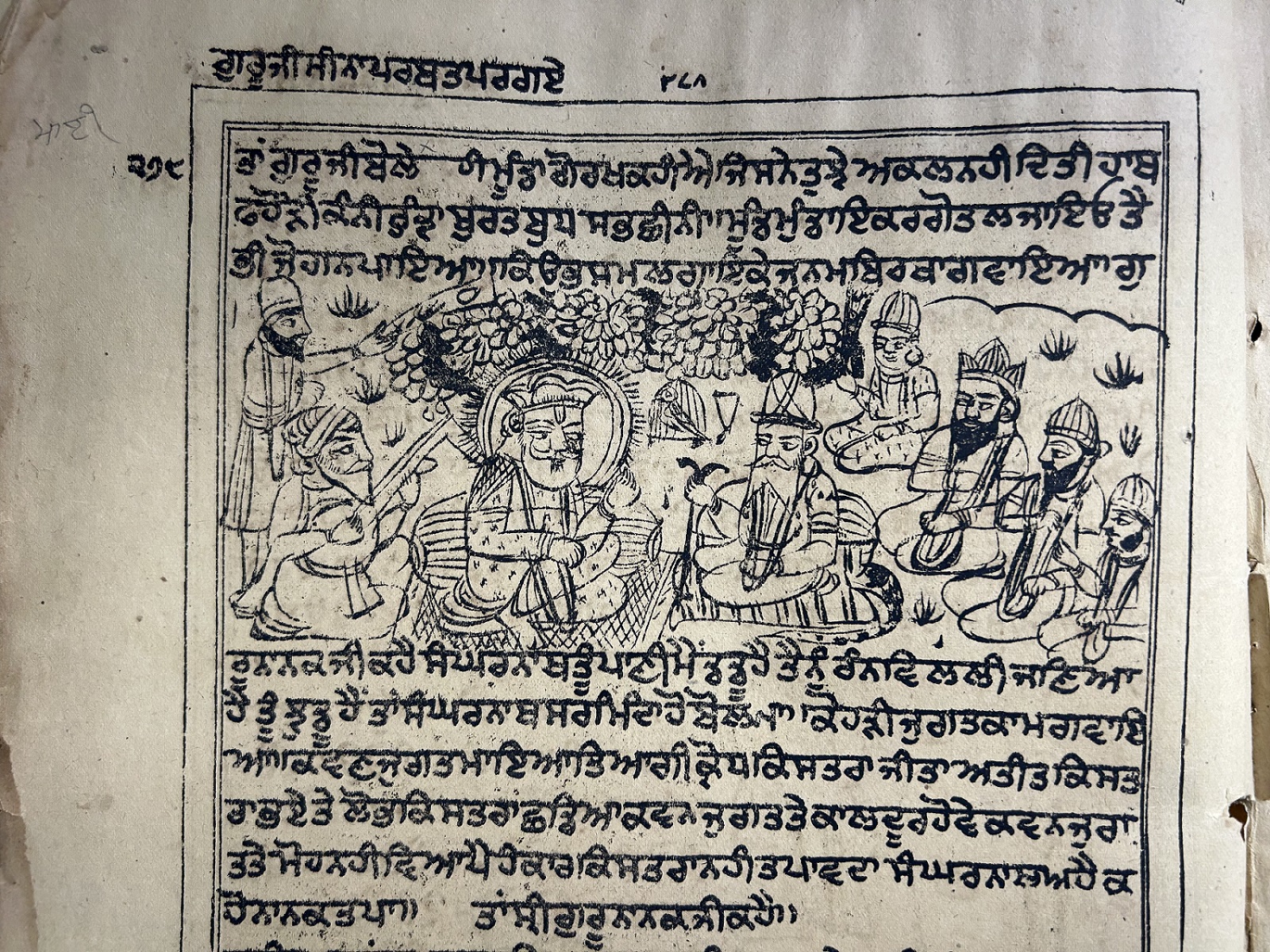
In the first image, Mardana ji and Guru Nanak Dev ji arrive at the city of Swaranpur shown on the left side of the upper segment. Mardana Ji inquires with a resident of the city regarding the name of the city in the segment on the right. He inquired about food with Dharam Singh because he was famished. Therefore, Dharam Singh declares that he is free to consume anything, as it is a devotional offering to God which is shown in the lower section of the page. In the second image, Guru Nanak Dev ji is shown having a conversation with Sangar Nath, who is a disciple of Gorakhnath. Nanak ji advises him to live righteously, and reject the finery that surrounds him. |
|
These sketches, miniature paintings, and lithograph illustrations of Janamsakhis of Guru Nanak Dev Ji offer a visual window into the life and teachings of the founder of Sikhism. These artistic representations serve as a powerful medium for conveying the spiritual and historical significance of Guru Nanak's life and his profound messages. Through the intricate details and vivid colors found in miniature paintings, or the precision of lithograph illustrations, these visual depictions have helped to perpetuate the legacy of Guru Nanak and his contributions to Sikhism. This photo-essay was submitted to DAG Museums as a part of the programme called 'Curious Curatorium', where eminent art historian Tapati Guha-Thakurta and DAG mentored a group of young art historians, curators and writers, to write about a significant museum collection in India. |
|
|


